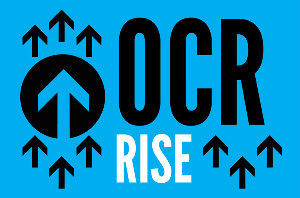The rising OCR and its effect on mortgages
The Reserve Bank is predicting an annual fall in house prices of more than 5% by March next year and a total fall of about 9% starting from this quarter.
Thursday, February 24th 2022, 12:36PM
by Sally Lindsay

In its projections in the latest Monetary Policy Statement, the bank says house prices falls can be expected in the next nine quarters.
The Reserve Bank says there will be quarterly falls of more than 1% for every quarter this year. The peak of 1.5% will be in 1.5% in the September quarter.
It’s central forecast is for prices to drop about 9% to mid-2024.
The bank says the magnitude and timing of house price falls have always been uncertain and higher mortgage interest rates, policy changes related to investors and tighter credit lending standards are some of the key factors now weighing on housing demand.
Falling house price estimates by the Reserve Bank are higher than the ANZ which is predicting a 7% decline and ASB 6%, while Kiwibank says prices will fall by only 1-2%.
Effect on households
The key question many investors and other home owners are asking is how much will OCR hikes hurt household balance sheets?, says ANZ chief economist Sharon Zollner.
The answer to this question, she says, is a function of three key factors: the degree of interest rate rises, growth in household incomes, and growth in household debt.
ANZ put these together on a path consistent with its broader economic outlook to investigate the likely looming change in household debt burdens.
“There are certainly tougher times ahead for mortgaged investors and other borrowers, but based on our forecast for a 3% OCR, we don’t yet see flashing red lights,” says Zollner. She says the bank’s aggregate analysis likely understates debt concentration risks. That is, there are a lot of highly indebted recent first home buyers who will feel the pinch of rising interest rates a lot more than the average mortgaged investor and other borrowers.
Rising mortgage rates tends to impact the housing market relatively quickly, and Zollner says the bank is seeing that - alongside other impacts such as from the lending rules under the prescriptive CCCFA and tighter RBNZ macroprudential restrictions - in falling house sales and in the past two months, falling prices.
However, for households with a fixed loan - which includes many mortgaged investors - there’s a delay before the impacts of higher rates pass through. The majority of housing loans are fixed for less than one year, so the peak impact on households shouldn’t lag by much more than that.
Big picture
In aggregate, however, there are a lot more existing investors and owner occupiers than recent first home buyers. These less recent buyers have seen significant capital gains, have paid back some principal, and have generally seen their nominal incomes grow.
ANZ’s analysis bundles these households together with recent first home buyers to assess the aggregate picture, and potency of OCR hikes.
The big picture is the realm that macroeconomic policy (such as the OCR) operates in. Failure to acknowledge that, by focusing too heavily on the recent highly indebted, highly political, first home buyer, would risk the RBNZ not getting on top a potentially damaging wage-price spiral in a timely fashion, says Zollner.
“The counter argument to this is that at some point, households at the highly indebted end of the spectrum are also the marginal households that tip the scale of broader economic momentum.”
In the second quarter of last year, despite record-high household debt, low interest rates meant debt servicing was accounting for a relatively small share of disposable income - just 5.3%. A lot has changed since then and the two-year mortgage rate has lifted about 170 basis points for starters!
Using its expectation for a 3% OCR by April 2023 to estimate an effective mortgage rate, the ANZ then uses its forecast for household debt growth of just short of 5% year-on-year over the next couple of years and household disposable income growth of 5% year-on-year to predict debt servicing as a share of income will lift from a low of about 5% in late 2021, to about 8% by December next year. That’s about where things stood in 2018, and well below the pre-global financial crisis (GFC) peak of 14%.
The bank also replicated the same interest rate scenarios but with much weaker household income growth - weaker than the GFC.
In practice, then, says Zollner, it’s not likely to be the debt-servicing channel that makes the wheels fall off should the OCR go well beyond the bank’s 3% forecast. “If the OCR rose to, say 6%, we would be forecasting house price falls of considerably more than 7% from their current undeniably lofty levels. The impacts on household spending via the wealth channel, and on construction activity, would probably hit a macroeconomic crunch point before aggregate household debt-servicing did.”
She says it’s not surprising that aggregate income-focused housing analysis paints a relatively robust picture for households staring down the barrel of rising interest rates.
“But that’s not to say there isn’t debt concentration risk out there of which the Reserve Bank needs to be wary as it lifts interest rates. While some home buyers inherited or have been gifted their deposit, they don’t necessarily have particularly high incomes – and those incomes might not be keeping up with inflation.
“Households in this situation, and possibly those that derive their income from the likes of hospitality and international tourism (industries struggling in the wake of the pandemic) will likely have a much harder time of it over coming years.”
| « Home mortgages will not rise at the same rate as the OCR – CoreLogic | Vincent Capital adds a South Island BDM » |
Special Offers
Comments from our readers
No comments yet
Sign In to add your comment
| Printable version | Email to a friend |



